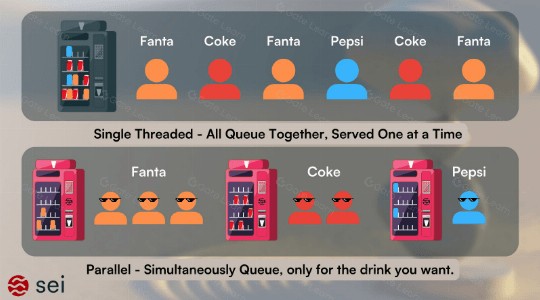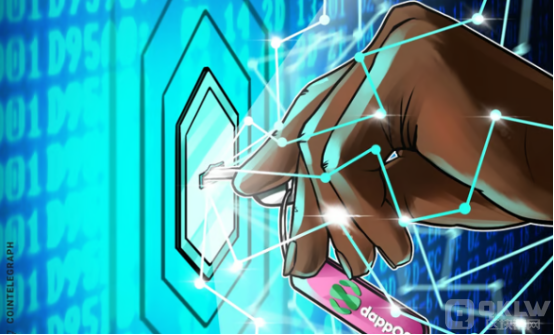时间:2024-04-13|浏览:416
原作者:老白
原始来源:推特
注:本文来自@Wuhuoqiu Twitter,火星财经整理如下:
近期一级市场上,最热门的赛道无疑是AI,其次是BTC。每天讨论的项目80%都集中在这两个轨道上。我个人一天最多能讲5、6个AI项目。
可以预见,未来两年AI泡沫将达到顶峰。随着数百个新的AI项目的上线,AI赛道的市值将达到顶峰。当泡沫最终破灭,一切都陷入混乱时,真正找到AI X Crypto契合点的独角兽将会诞生,推动这条赛道和整个行业向前发展。
那么在当前AI过热的环境下,我们静下心来看看近几个月来Infra层面,尤其是公链Infra赛道发生了哪些变化。有些新事物值得一提。
1. ETH,还是单链的进一步解构
当Celestia第一次提出模块化和DA层的概念时,市场其实花了很长时间来消化和理解。现在这个概念已经深入人心,各种RaaS基础设施已经涌入到基础设施数量应用数量用户数量的阶段。
执行层、DA层和结算层在过去几个月里经历了一些不同的技术进步。每一层都衍生出新的技术方案,甚至结算层的概念也不再是ETH独有的。下面简单说一下每一层的代表性技术。
2.执行层-
执行层最热门的概念无疑是Parallel EVM——以Monad、Sei、MegaETH为代表,一些现有项目如FTM、Canto也计划朝这个方向升级。然而,正如并非所有 ZK 项目都会保护隐私一样,标有 Parallel EVM 的项目实际上也有不同的技术路线和最终目标。
拍一张 Sei 的照片作为直观的演示。显然,在乐观的情况下,从现有的顺序处理到并行处理的性能提升还是非常明显的。

并行EVM其实可以分为几种不同的技术路线
从交易如何并行化的角度来看——太阳底下没有什么新鲜事,除了先验和后验的区别
Solana和Sui就是这方面的代表,要求交易显式地声明自己修改了链上哪些部分的状态,这样在打包区块之前就可以检测是否存在状态冲突(比如访问同一个AMM池),并且如果是,则丢弃冲突的事务。
Post-hoc is also called optimistic parallelism, represented by Aptos BlockSTM, which means that it is assumed that there is no conflict before accepting the transaction, and then checking it after execution. If a conflicting transaction is found, the transaction is declared invalid, the result is refreshed, and the transaction is re-executed. This step is repeated until all transactions in the block are executed. Sei, Monad, MegaETH, and Canto use similar solutions
We have also seen parallel solutions for state conflict scenarios (such as accessing the same AMM pool as mentioned above) in the primary market, but it seems that the project will be relatively complicated and it is not certain whether it is commercially feasible. It is still under evaluation.
According to the degree of importance attached to Parrallel EVM, it can also be divided into two schools
One is Monad, represented by Sei, which takes how to trade in parallel as the main expansion idea, that is, Parallelization is the main narrative. For example, in addition to optimistic parallel processing, Monad also has a specially developed MonadDB, and asynchronous I/O is specially used for parallel processing.
The other is the idea of Fantom, Solana, and MegaETH. Parallelization is one of the expansion solutions, but it is only one of them. Parallelization is an auxiliary narrative, and performance improvement depends more on other technical solutions.
For example, Fantom's Sonic upgrade focuses on the FVM virtual machine + and the optimized Lachesis consensus mechanism. Solana's next phase will focus on the modular architecture of the new Firedancer client, optimized network communication mechanisms and signature verification, etc.
The goal of MegaETH @megaeth_labs is to realize Realtime-blockchain. First, based on the newly developed Reth high-performance client of Paradigm, further optimization and improvement have been made in the state synchronization mechanism of the full node (only synchronizing the state difference instead of all data), the hardware design of the Sequencer (a large amount of high-performance RAM with storage function for state access to avoid slow disk I/O), and the data structure improvement of Merkle Trie. This is equivalent to a comprehensive improvement in software, hardware, data structure, disk IO, network communication, transaction sorting and parallel processing, pushing the performance ceiling of EVM to the limit and approaching "Realtime Blockchain".
3. DA layer
There is no significant technological iteration at the DA level, so the competition in this track is far less intense than that at the execution level. There are only a few major players.
ETH's CallData has been upgraded to Blob, and the fees of various L2s have dropped significantly. Now ETH is a "less expensive" DA
Celestia’s greater role is that it was the first project to propose the concept of the DA layer after it went online, which raised the DA track from the ceiling of 2 billion FDV to 20 billion, and from then on, the pattern and imagination were opened up. Many new Layer2 Appchains naturally chose Celestia as their first choice of DA.
Avail has become independent from Polygon. Technically speaking, it is more like an "enhanced version of Celestia". For example, it uses Polkadot's Grandpa+BABE consensus mechanism. Compared with Celestia's Tendermint, it can theoretically support the decentralization of more nodes. It also supports Validity Proof, which Celestia does not support, etc. Of course, the technical differences are far less important than the ecology. Avail still needs to catch up in terms of ecology.
EigenDA was also launched together with the EigenLayer mainnet two days ago. As one of the strongest narratives and the most commercially cooperative projects in this round, I personally feel that the adoption rate of EigenDA will not be low. In theory, as long as it feels "safe and cheap", not many projects really care whether you use Validity Proof or Fraud Proof, whether DAS supports it, etc.
What is more worth mentioning is the following three DAs
1. Near DA - Near is a magical public chain. It was originally designed for sharding and is still doing it now. But while doing sharding, it also developed DA - cheaper than Celestia and supports fast settlement of L2; chain abstraction - Near recently launched chain signatures, allowing users to request signatures for transactions on any chain through a single NEAR account; AI - Founder illia is one of the eight Transformer members, the one who was tapped on the shoulder by Mr. Huang at the NVIDIA conference. He is now planning to hire AI engineers and will release an announcement related to http://near.ai next month... Hexagonal warrior, I also threw it into the DA track
2. BTC&CKB - Because the first layer of BTC does not support smart contracts and cannot be directly settled, dozens of BTC EVM Layer2s are now basically using BTC as DA. The only difference is whether to throw ZK Proof directly onto BTC or throw the Hash of ZK Proof onto it, as if they cannot call themselves "BTC Layer2" if they don't do this. Recently, I actually encountered a new project that said, "I don't pretend anymore, I am ETH L2, DA settlement is all on ETH, but I serve the BTC ecosystem!", which is quite funny... The only alternative expansion solution is RGB++ launched by CKB. In this framework, CKB has become a DA-like existence, and BTC has become a settlement layer of RGB++ because of the black technology of UTXO isomorphic binding.
2. New DA - I will talk about two new ideas for DA, but I won't mention the project names. One is to combine DA with AI. In addition to being a high-performance DA, it can also serve as a storage layer for large AI models, training data, and training trajectories. The other is to improve the error correction code mechanism of Celestia and other DAs, which can provide a more robust network status in an unstable state such as a dynamic network (several nodes are randomly disconnected in each round).
4. Settlement Layer
Originally, this layer was almost exclusively owned by ETH. DA had Celestia competing with it, and it had a number of L2s to execute itself. The only difference is settlement. Other chains like Solana and Aptos do not have L2 yet. BTC’s L2 does not use BTC and cannot be used as settlement. Currently, the only settlement layer you can think of is ETH.
However, this situation will soon change. We have seen several new projects heading in the direction mentioned at the beginning of the article.
, some old projects have also begun to transform in this direction, namely - ZK verification/settlement layer - further deconstructing ETH (stealing ETH's business)
Why did such a concept come about?
The reason is that running contracts on ETH L1 to verify ZK Proof is not the best choice in theory.
Technically, in order to verify the correctness of ZK Proof, developers need to write verification contracts based on Solidity according to the ZK project and the ZK Proof System they choose. This requires relying on a lot of cryptographic algorithms, such as the need to support different elliptic curves. These cryptographic algorithms are usually relatively complex, and the EVM-Solidity architecture is not the optimal platform for implementing these complex cryptographic algorithms. For some ZK projects, the cost of writing and verifying these verification contracts is also very high.
This has hindered some ZK ecosystems from natively joining the EVM ecosystem to some extent, so ZK-friendly languages such as Cario, Noir, Leo, and Lurk can only be verified on their own Layer 1. At the same time, when updating or upgrading these things on ETH, it is always "difficult to turn around".
In terms of cost, although the "protection fee" DA paid by L2 accounts for the majority, ZK contract verification also requires Gas fees, and verification on Ethereum is definitely not a cheap option. In addition, ETH Gas fees soar from time to time and become a "noble chain", the verification cost will also be greatly affected.
As a result, new ZK verification/settlement layer concept projects have emerged. New projects are still relatively early, with Nebra as a representative. Old projects have also pivoted in this direction, such as Mina and Zen, which just passed the new proposal.
The overall idea of most projects in this track is basically
1. Support multiple ZK languages
2. Support ZK aggregation proof, more efficient and cheaper
3. Faster Finality Time
At present, it seems that the ZK settlement layer and the decentralized Proof Market are likely to be tied together. After all, you need computing power in addition to technology. We may see some settlement layer projects cooperating with Proof Market projects, or the settlement layer with computing power may directly build a Proof Market, or the Proof Market with technology may come out to build a settlement layer. The market will have the final say on how to go.
There should be many articles on other areas of Infra, such as OEV in the field of Oracle and MEV, and ZK light client in the field of interoperability. I will not repeat them here. Next time I see something new and interesting, I will share it with you.
Finally, thanks to our Tech Lead @cyodyssey for his review and revision :)
热点:公链





![[旋律]区块链基础设施和DeFi项目吸引风险投资者](/img/btc/64.jpeg)



